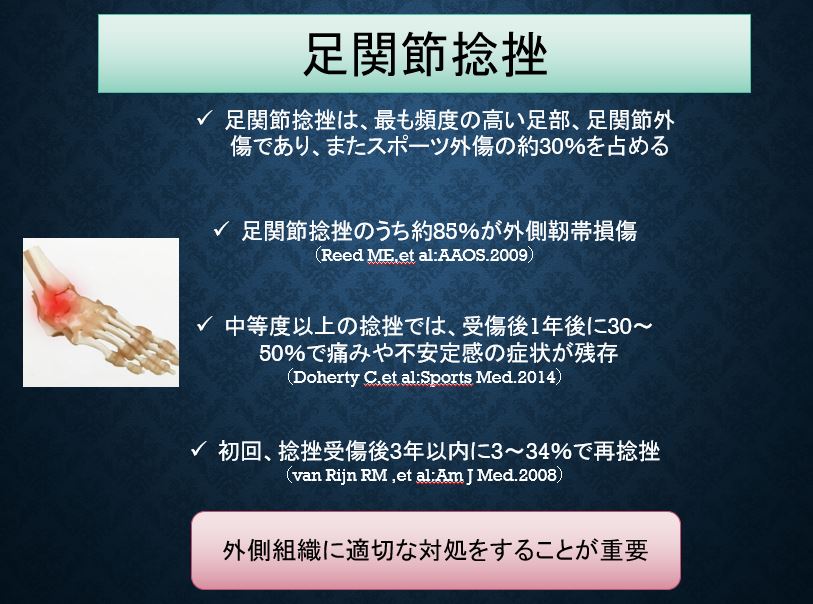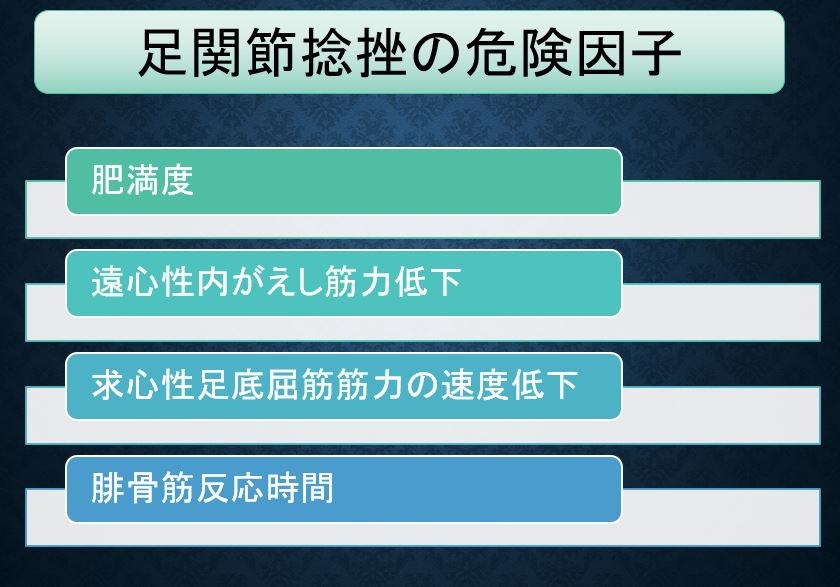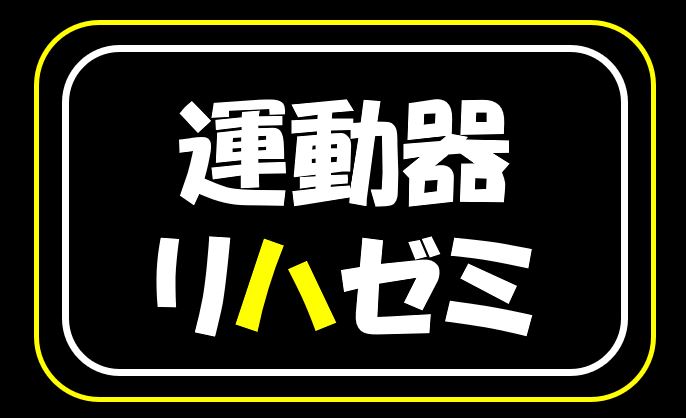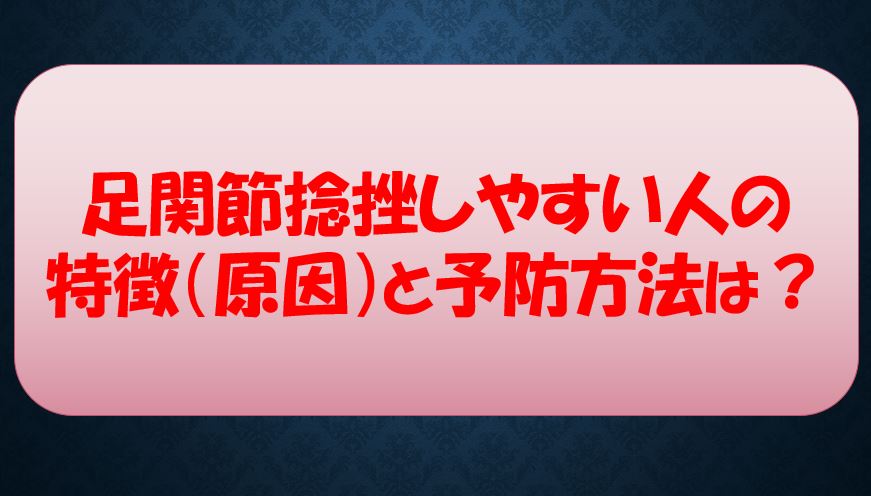こんにちは!
運動器専門のリハビリスタッフです!!
いつもお世話になります。
今回は、『足関節捻挫をしやすい人の特徴(原因)と予防方法は?』について解説させていただきます。
『長母趾屈筋のストレッチは足関節背屈+母趾伸展だけでは不十分?』
足関節捻挫は、最も頻度の高い足部、足関節外傷であり、またスポーツ外傷の約30%を占めるとされています。
足関節捻挫のうち約85%が外側靭帯損傷で(Reed ME,et al:AAOS.2009)、中等度以上の捻挫では、受傷後1年後に30~50%で痛みや不安定感の症状が残存する(Doherty C,et al:Sports Med.2014)とされています。
また、初回、捻挫受傷後3年以内に3~34%で再捻挫する(van Rijn RM ,et al:Am J Med.2008)と報告されています。

そんな中、2016年に足関節捻挫の危険因子について報告している論文が海外で報告されています。
内容が気になるところです。
◆論文紹介
Review
Sports Health (IF: 3.84; Q2)
. Mar-Apr 2016;8(2):190-3.
doi: 10.1177/1941738115623775.
Intrinsic Risk Factors of Lateral Ankle Sprain: A Systematic Review and Meta-analysis
足関節外側捻挫の内在的危険因子。システマティックレビューとメタアナリシス
Takumi Kobayashi, Masashi Tanaka, Masahiro Shida
- PMID: 26711693 PMCID: PMC4789932 DOI: 10.1177/1941738115623775
Abstract
Context: Lateral ankle ligamentous sprain (LAS) is one of the most common injuries in recreational activities and competitive sports. Many studies have attempted to determine whether there are certain intrinsic factors that can predict LAS. However, no consensus has been reached on the predictive intrinsic factors.
背景 足関節外側靭帯捻挫(LAS)は、レクリエーション活動や競技スポーツにおいて最も一般的な傷害の1つである。多くの研究が、LASを予測できる特定の内在的要因があるかどうかを明らかにしようとしてきた。しかし、予測可能な内在的要因についてのコンセンサスは得られていない。
Objective: To identify the intrinsic risk factors of LAS by meta-analysis from data in randomized control trials and prospective cohort studies.
目的 無作為化対照試験および前向きコホート研究のデータからメタ解析によって足関節外側靭帯捻挫(LAS)の内在的危険因子を特定すること。
Data sources: A systematic computerized literature search of MEDLINE, CINAHL, ScienceDirect, SPORTDiscus, and Cochrane Register of Clinical Trials was performed.
データソース MEDLINE,CINAHL,ScienceDirect,SPORTDiscus,Cochrane Register of Clinical Trialsを用いて,コンピュータによる系統的な文献検索を行った。
Study selection: A computerized literature search from inception to January 2015 resulted in 1133 studies of the LAS intrinsic risk factors written in English.
研究の選択。設立から2015年1月までのコンピュータによる文献検索の結果、英語で書かれた足関節外側靭帯捻挫(LAS)内在性危険因子に関する1133件の研究が見つかった。
Study design: Systematic review.
研究デザイン:。システマティックレビュー。
Level of evidence: Level 4.
エビデンスのレベル レベル4とした。
Data extraction: The modified quality index was used to assess the quality of the design of the papers and the standardized mean difference was used as an index to pool included study outcomes.
データ抽出を行った。論文のデザインの質を評価するためにmodified quality indexを用い、含まれる研究結果をプールするための指標としてstandardized mean differenceを用いた。
Results: Eight articles were included in this systematic review. Meta-analysis results showed that body mass index, slow eccentric inversion strength, fast concentric plantar flexion strength, passive inversion joint position sense, and peroneus brevis reaction time correlated with LAS.
結果 8件の論文が本システマティックレビューに含まれた。メタアナリシスの結果、肥満度指数、遠心性内がえし筋力、求心性足底屈筋の筋力の速さ、他動内がえし関節位置感覚、腓骨筋反応時間が足関節外側靭帯捻挫(LAS)と相関していた。
◆論文の結論
Conclusion: Body mass index, slow eccentric inversion strength, fast concentric plantar flexion strength, passive inversion joint position sense, and the reaction time of the peroneus brevis were associated with significantly increased risk of LAS.
結論満度指数、遠心性内がえし筋力、速い足底屈筋の筋力、他動内がえし関節位置感覚、腓骨筋反応時間は足関節外側靭帯捻挫(LAS)のリスクを有意に増加させることと関連していた。
◆まとめ
上記の論文は、英語で記載された、足関節外側靭帯捻挫(LAS)の内在性危険因子に関する1133件の研究から分析しています。
結果的には肥満度指数、遠心性内がえし筋力、求心性足底屈筋の筋力の速さ、他動内がえし関節位置感覚、腓骨筋反応時間が足関節外側靭帯捻挫(LAS)と相関していた。
これらの因子が足関節外側靭帯捻挫(LAS)のリスクを有意に増加させることと関連していたと報告されています。
逆に考えれば、これらの要因を克服するようなトレーニングを行っていけば、足関節捻挫予防につながると考えられます。

今回は、『 今回は、『足関節捻挫をしやすい人の特徴(原因)と予防方法は?』について解説させていただきます。 』について解説させていただきました。


![[商品価格に関しましては、リンクが作成された時点と現時点で情報が変更されている場合がございます。] [商品価格に関しましては、リンクが作成された時点と現時点で情報が変更されている場合がございます。]](https://hbb.afl.rakuten.co.jp/hgb/1fb765f2.4eb9ff03.1fb765f3.28d0a1e9/?me_id=1276609&item_id=12136716&pc=https%3A%2F%2Fthumbnail.image.rakuten.co.jp%2F%400_mall%2Fbooxstore%2Fcabinet%2F00900%2Fbk475831912x.jpg%3F_ex%3D240x240&s=240x240&t=picttext)


